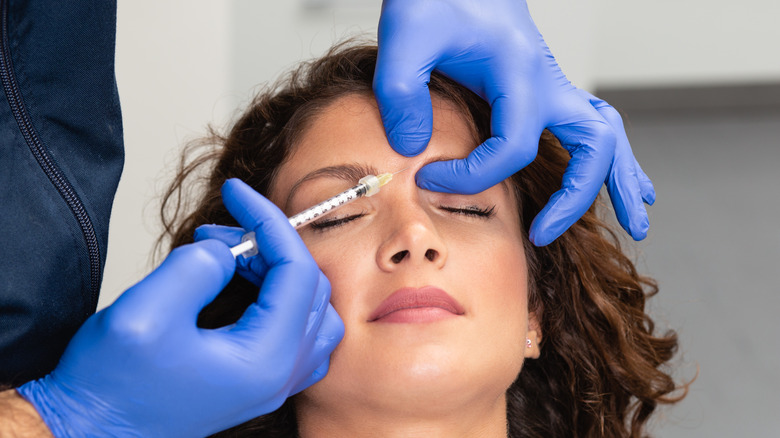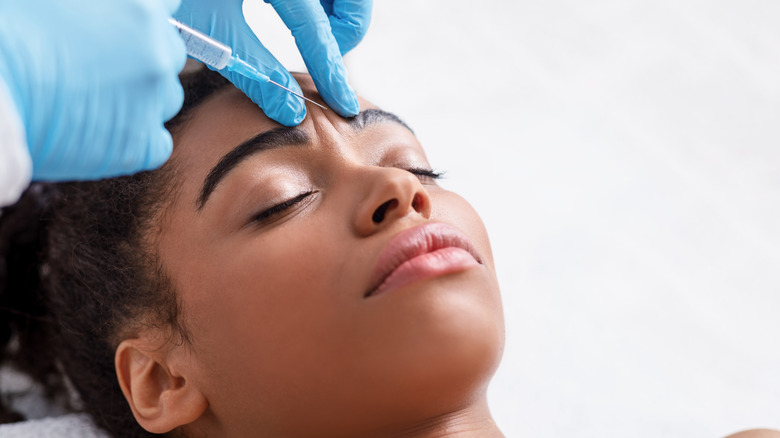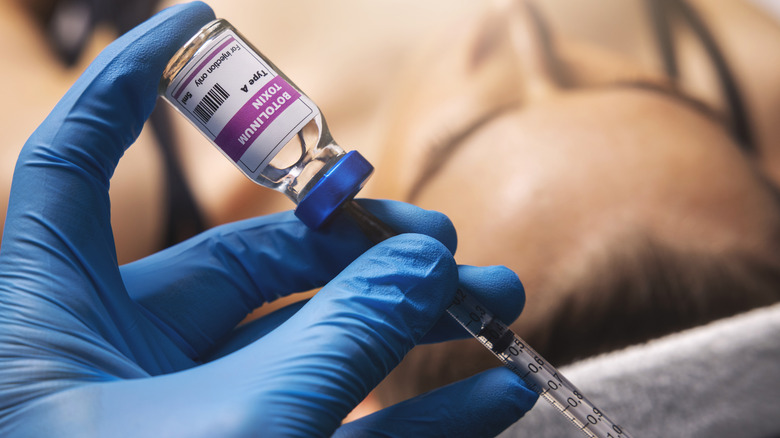Dysport Vs. Botox: Which Is Better?
Cosmetic procedures have come a long way, and nowadays, noticeable transformations can be achieved without plastic surgery. Injection options like Dysport and Botox have become more and more popular because of their quick results with minimal downtime. Per the American Society of Plastic Surgeons, a 2020 report revealed an astounding 4.1 million neurotoxin injectables were performed in the United States.
Typically done at a doctor's office or medical spa, a licensed professional will determine if you're a candidate and can help treat wrinkles using these FDA-approved products (via Eternal Dermatology). The procedures are measured in units and may require multiple doses, which can quickly add up to hundreds if not thousands of dollars (via Granite Bay Cosmetic Surgery). Plus, since it's the face we're talking about, it's not always a cut-and-dry decision that can be made lightly.
Curious about the world of injectables but not sure which procedure is best for you? Take the guesswork out and kick off your research by reading to see which option is better for your anti-aging goals.
Dysport is powerful but limited to targeting frown lines
For starters, Dysport is a newer type of injectable that received FDA approval in 2009 and is made by Galderma (via Canada Med Laser). It falls under the botulinum toxin family, which are medications that get their active ingredient from a type of bacteria. When injected, it can interfere with nerve signals to the muscles to prevent the formation of wrinkles (via the American Society of Plastic Surgeons).
What makes Dysport different from other injectables is that it's specifically designed to treat wrinkles between the eyebrows known as glabellar, or "11 lines" for their vertical shape (via Angell Medical Spa). While Dysport has proven to be very effective at treating these frown lines — it travels the area more quickly than Botox — you're limited by what spots you can target since it can't treat much else (via Real Self). It's also not recommended for those who have subtle glabellar lines since it's really strong and should be used only in cases of moderate to severe "11's" (via Healthline).
The good news is that no matter which injectable procedure you get, some providers offer a local anesthetic first to numb the area to keep pain at a minimum (via Academic Alliance in Dermatology).
Botox can reach multiple areas of the face, but comes at a hefty price
Similar to Dysport, which lasts three to four months, Botox results can last for up to six months (via Healthline). However, what makes Botox different is the broad amount of areas it can reach, like fine lines around the mouth, nose, and crows feet, and even treats excessive sweating known as hyperhidrosis (via Allure). According to U.S. Dermatology Partners, Botox sticks to the injected area and is more precise than Dysport, which tends to move around. The private practice group also notes that the amount of time before the treatments take effect varies, since it can be up to two weeks before seeing the results of Botox, while Dysport can be seen almost immediately.
Per Healthgrades, the cost can also be a factor, as injectables are considered a cosmetic procedure. Unless they're being used to treat a medical condition like migraines, most insurance won't cover it.
As it turns out, Dysport is less expensive than Botox and can cost $450 on average, but more units are needed to get the effect (via Real Self). Dysport may be more accessible and offer quicker results from a financial standpoint, but if you're looking to tackle multiple wrinkles and breathe life back into tired eyes, Botox could be your better bet.


